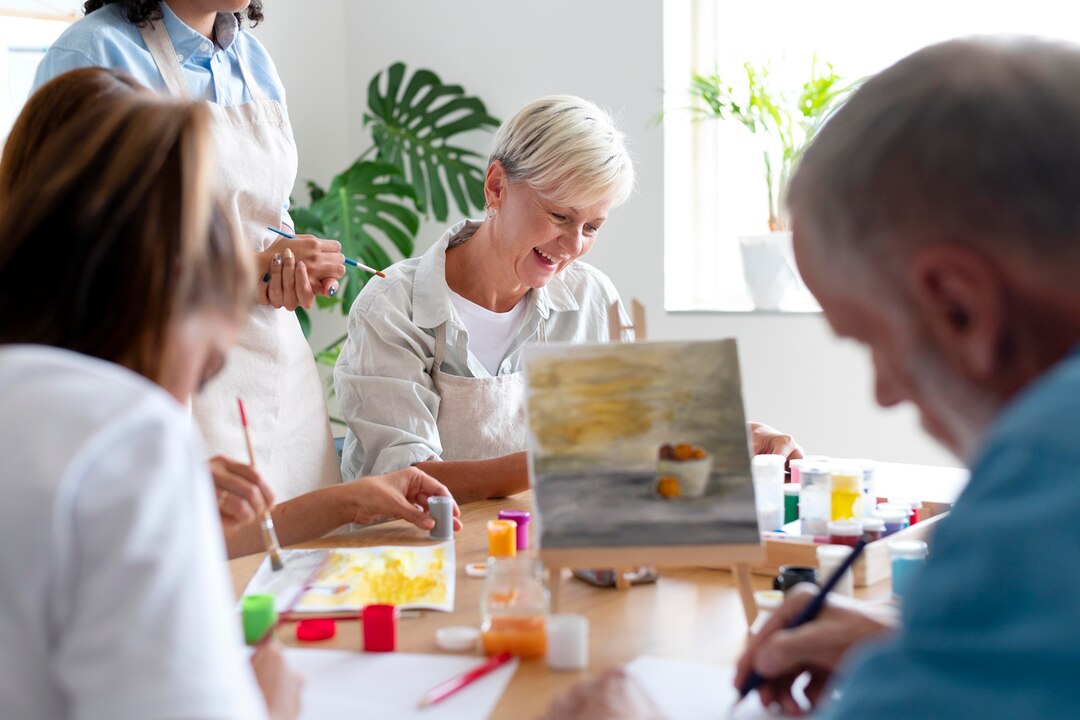In today’s fast-paced world, self-care has become more important than ever for maintaining mental, emotional, and physical well-being. While traditional methods such as exercise and meditation are widely practiced, another form of self-care is gaining recognition for its therapeutic benefits: art therapy. By engaging in creative expression, individuals can tap into their innermost thoughts and emotions, fostering self-awareness, relaxation, and healing. Let’s explore the transformative potential of art therapy as a tool for self-care.
1. Understanding Art Therapy:
Art therapy is a form of psychotherapy that utilizes artistic expression as a means of communication and self-exploration.
Unlike traditional art-making, the focus in art therapy is not on artistic skill or technique, but on the process of creation and the emotions it evokes.
Through various mediums such as painting, drawing, sculpting, and collage, individuals can externalize their inner experiences and gain insight into their thoughts, feelings, and conflicts.
2. Promoting Self-Expression:
One of the key benefits of art therapy is its ability to facilitate self-expression in a non-verbal manner.
For individuals who may struggle to articulate their emotions verbally, art provides a safe and accessible outlet for communication.
Through the act of creating art, individuals can express complex feelings, memories, and experiences that may be difficult to put into words, leading to a greater sense of emotional release and catharsis.
3. Cultivating Mindfulness and Relaxation:
Engaging in art-making can induce a state of mindfulness, where individuals are fully present in the moment and focused on the task at hand.
The repetitive motions involved in art-making, such as brushstrokes or shaping clay, can promote relaxation and reduce stress levels.
By immersing oneself in the creative process, individuals can experience a sense of calm and tranquility, allowing them to temporarily escape from the pressures of daily life.
4. Fostering Self-Discovery and Empowerment:
Art therapy encourages individuals to explore their inner world and discover new insights about themselves.
Through the interpretation of their artwork, individuals can gain a deeper understanding of their thoughts, emotions, and behavioral patterns.
By externalizing internal struggles and conflicts, individuals can develop a sense of agency and empowerment, leading to greater self-confidence and resilience.
5. Integrating Art Therapy into Self-Care Practices:
Incorporating art therapy into one’s self-care routine can be done in various ways, whether through solo art-making sessions at home or guided sessions with a trained art therapist.
Setting aside regular time for creative expression can provide a valuable opportunity for self-reflection and emotional processing.
Experimenting with different art mediums and techniques can help individuals discover what resonates most with them and enhances their self-care practice.
Art therapy offers a powerful pathway to self-care and wellness, providing individuals with a creative outlet for self-expression, mindfulness, and self-discovery. By engaging in artistic endeavors, individuals can cultivate greater self-awareness, relaxation, and empowerment, leading to a more balanced and fulfilling life. Whether used as a standalone practice or integrated into existing self-care routines, art therapy has the potential to unlock transformative healing and growth for individuals seeking holistic well-being.








